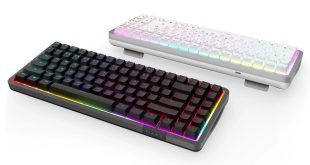The One is supplied with a heavily customised version of Android Jelly Bean V4.1.2 with HTC Sense V5.0, however we updated the phone over the air to V4.2.2 before commencing our tests.
HTC's Sense overlay gives the standard Android home screens a slightly different appearance to normal. There is a launcher bar along the bottom of the screen which can hold up to four shortcuts, staying in the same place throughout all of the home screens. This bar also contains the menu key in the centre.
The icons which populate the launcher bar are also accessible from the lock screen, allowing speedy access to those applications which you use most frequently. The notifications bar can also be accessed directly from the lock screen, letting you check them intuitively.
Swiping left from the main home screen reveals HTC BlinkFeed. This is a stream of content from your selected social networks and other news feeds which is refreshed every time you wake up the phone. It's fully configurable so you can populate it with the exact information you want. Unfortunately for those who don't want to use BlinkFeed, it cannot be removed from the home screen.
The Sense overlay extends to the application tray which has a remarkably different visage to more vanilla Android flavours. There are only three columns of apps, so they layout doesn't seem as crowded as other phones. There is also a clock and weather widget at the top of the tray, but this disappears when scrolling down to allow room for more icons. HTC preload a number of apps on the One, most of which are pretty useful. These include TuneIn radio and Dropbox, as well as some useful utilities like a flashlight application that makes use of the LED flash.
Other useful additions include a car mode which is optimises the phone for being mounted on your dash, providing large icons for the functions which will be most useful to drivers.
 KitGuru KitGuru.net – Tech News | Hardware News | Hardware Reviews | IOS | Mobile | Gaming | Graphics Cards
KitGuru KitGuru.net – Tech News | Hardware News | Hardware Reviews | IOS | Mobile | Gaming | Graphics Cards





